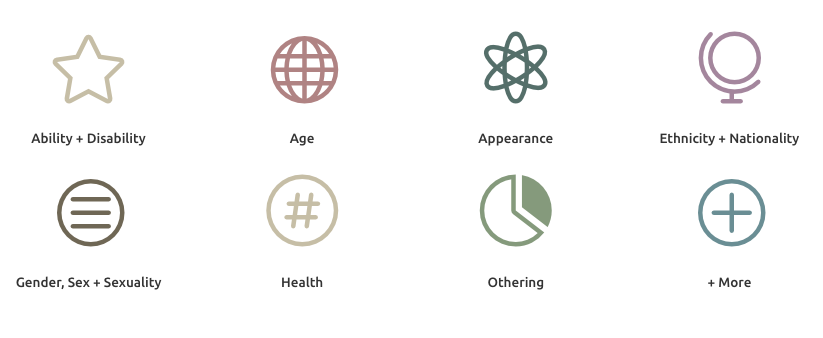Do you remember Richard Scarry’s books? You might have heard that last year, his classic Best Word Book Ever got some updates. "Pretty stewardess" became "flight attendant," references to Hannukah were added to the holiday spread, and jobs that were traditionally reserved for men were updated to feature women.
The book is a great example of how our society evolves, and how we update our language to match.
In business, the words we use with our customers and colleagues can be the difference between success and failure. When people we need to communicate with feel alienated, marginalized, or disempowered, nobody wins—not your customers, not your colleagues, and not you.
Luckily, there’s a new handbook to help you avoid those situations. The Conscious Style Guide, created by writer and editor Karen Yin, is the first website dedicated to conscious language. It's a collection of resources, guidelines, and context to help people craft language that is kind, compassionate, mindful, empowering, respectful, and inclusive.
"When we’re talking to people about people, the stakes are high because words have tremendous power," Yin says. "Between our audience and our subject, what we say affects a great deal of people." With Yin's help, we dug into how making mindful decisions about the words you use can help customers and employees feel more comfortable with your company--and how you can communicate with anyone with respect and sensitivity.
What is conscious style?

The Conscious Style Guide provides information in many different formats to help people make educated choices when writing or speaking about:
It points to guides that cover specific terminology, such as the Asian American Journalist Association’s guide to covering Asian Americans and the American Psychiatric Association’s guide to talking about mental health. If you’re wondering about a specific word or phrase, guides like these can provide general rules.
For example, the APA advises against using words like "suffers" or "victim" when talking about a health condition, and saying something like "he has a mental illness" rather than "he suffers from mental illness." It might seem like a small difference, but your word choice can still be significant: Instead of focusing on the condition, focus on the person. As the APA explains:
The basic concept is that the mental health condition (or physical or other condition) is only one aspect of a person’s life, not the defining characteristic. Preferred: She is a person with schizophrenia. Not preferred: She is schizophrenic.
Words matter. They have an invisible, yet powerful influence on all of us. The Conscious Style Guide helps you wade through the murky parts of language, where two words or phrases that seem to communicate the same idea hold drastically different meanings for different people.
Social context for our evolving word preferences
The Conscious Style Guide isn't a set of rules set forth by one person. Rather, the guidelines evolve along with our society. Each entry provides much-needed context, with links to blog posts and news articles such as this New York Times piece on Spanish names in baseball or a this post on how the labels we give to people with mental illness influence tolerance.
"It’s important to understand the societal context, because words don’t exist in isolation," Yin says. By sharing information on changing perspectives, the guide helps users keep up with conversations as they’re happening to adjust the language they use.
For example, most readers no longer consider the word "man" to be synonymous with the word "person."
"What sets Conscious Style Guide apart is that we evolve along with language whereas other style guides capture a moment in time," Yin says.
She notes that focusing on more than just "this word versus that word" allows the Conscious Style Guide to build bridges to the rationale, history, theory, and emotions behind the words we use to talk about people.
Language that empowers you and others
The guide also includes information on using empowering language—or deliberately choosing words that enable yourself and others. At work, especially, empowering language can be crucial. For example, using the word "and" instead of "but" can change a negative statement to a neutral one.
Saying something like, "I want to learn to code, but I don’t know where to start" emphasizes the negative. If you say "I want to learn to code, and I don’t know where to start" you’ve presented each side of the situation in a way that doesn’t block you from moving forward. Not knowing where to start becomes a simple fact rather than a barrier.
"One example of empowering language is saying ‘I’m going to work’ instead of ‘I have to go to work,’" Yin told me. "It’s choosing words and attitudes that affirm our agency and our choice to do these things."
Again, these are subtle differences that alter the tone of a conversation. It's like telling your child "we can't afford that" and instead saying "we choose to spend our budget on more important things." One creates a sense of scarcity, the other a sense of control and choice.
Empowering language is also about using words to empower others and even smooth over awkward or difficult conversations by choosing to say things like "You did this thing…" versus "You always do this…" which can put people on the defensive.
At work, empowering language has a place in how you write emails, how you talk to coworkers, how to give praise, and even how you say thank you (hint: don’t say sorry).
And sometimes the most empowering thing to say is nothing at all.
"A big part of empowering language is knowing when to say nothing, also known as the art of shutting up," Yin says. "Shutting up is more than an excellent negotiation tactic. Also, when we stop talking, we prevent ourselves from using unconscious language while we think of something mindful to say."
How to incorporate conscious style

Just start somewhere.
There’s a lot of information in the Conscious Style Guide, and it changes regularly. Don’t get overwhelmed by feeling like you need to overhaul everything you do immediately.
If you already have a style guide for your company's communications, think about two or three topics that apply to your everyday work, and start there.
In their content guide, 18F, a digital services agency in the federal government, pulled out a few relevant points for government organizations, such as how to talk about age, nationality, and gender. For example, their guide reads:
Be careful with Americans or the American public. These terms are ambiguous and are often used as synonyms for citizens. In most cases, the public is equally clear and more inclusive. That said, referring to Americans or the American people can be useful if you want to inspire readers or take a more patriotic tone.
MailChimp has a page called Writing About People in their style guide. Their TL;DR version points to the Conscious Style Guide as a resource and reads:
- We write and build apps with a person-first perspective. Being aware of the impact of your language will help make MailChimp a better place to work and a better steward of our values in the world. - Don’t reference age or disability unless it’s relevant to what you’re writing. - Avoid gendered language and use the singular "they." - When writing about a person, use their preferred pronouns; if you don’t know those, just use their name"
Your communications don't need to be perfect. Try pushing for change in one spot, and use that as a starting point for a larger conversation.
Think about your audience and their needs
"There are no good or bad ways of speaking, only less effective or more effective ways depending on context," says Yin.
Context is crucial for making decisions about language. Think about whom you’re talking to and what you’re trying to say. If you’re thoughtful about the context, you can avoid using language that alienates your audience or accidentally sends the wrong message.
"If you publish a successful magazine for women in their 50s who love muscle cars, changing your language to be more inclusive might mean losing your core fan base," Yin told me. "But if your magazine was created for lovers of muscle cars and you’ve mistakenly assumed that your audience is male and straight, then exclusive language will put off potential readers who don’t identify as those."
Get feedback from others
When you’re crafting language, ask for feedback from others. Gathering a broad range of perspectives can provide insight about things you might not have considered.
Recently, Zapier made its diversity and inclusivity statement stronger by asking for input and edits from all employees.
Seek out opportunities to view your word choices through others’ eyes.
Know that there might not be a "right" answer.
Conscious language isn’t as simple as choosing the "right" words from a list. Terminology that might work in one context could be totally wrong for another. And sometimes, says Yin, a community could be split about the use of certain words.
Take people-first language, for example. When talking about disabilities, some people would rather emphasize the person by saying "person with a disability" instead of "disabled person." But for others, there’s an identity wrapped up in the term "disabled person" that they want to retain.
"However, if we’re aware of the discourse, we can make decisions about how we want to navigate the controversy," Yin says.
Be mindful of how the language you're using could be received by someone else, and make an effort to understand the community that you're talking or writing about. When in doubt, ask.
Check in regularly
Because language is constantly changing, regular exposure to the conversations happening about language can help you monitor the words you choose and why.
The Conscious Style Guide has a monthly newsletter, aggregating resources on topics that are timely and relevant. For example, August’s newsletter included an article on how to talk about female Olympians and a piece on the real origin of the word "yas."
The newsletter in your inbox can act as a regular reminder to stay up-to-date and pull out what’s most relevant to you and your audiences.
Taking more care with the words you use is a no-brainer because it can only improve your business relationships--avoiding saying potentially offensive or alienating things and instead communicating tactfully.
The next time you write a blog post, send an email, give a big presentation, or communicate with your customers, use conscious style to be more purposeful about the language you use.
Any effort, however small, can make people feel more positive about you, your company, your vision and your products and strengthen important connections you need to be successful.
Language is tricky, so keep reading:
Start photo by jakeandlindsay.





